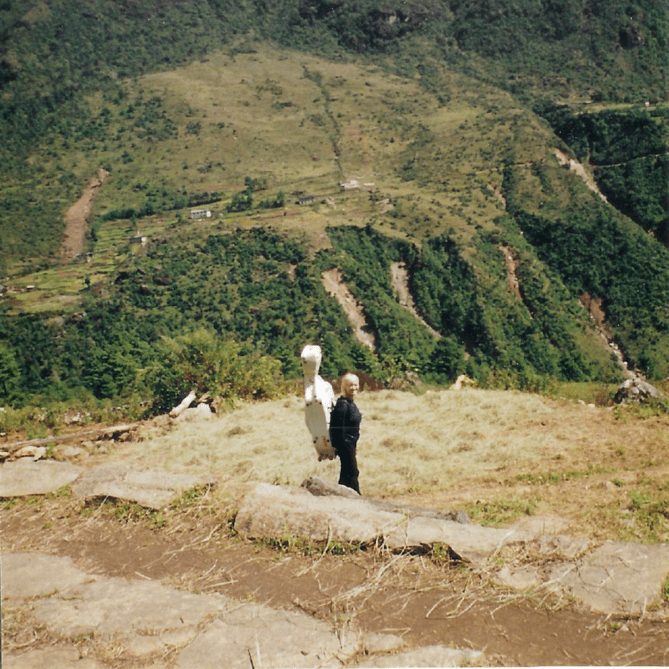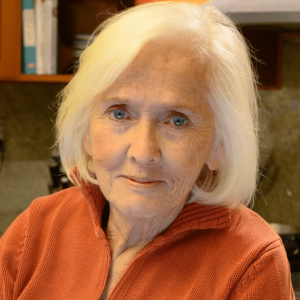
Bach in the Himalayas
Judith Glyde
Preface
I wrote a book! Really?
But I’m a cello player!
I’ve been a cellist from such a young age; and, except for a brief departure (an aberration perhaps?) into thinking about being a chemical engineer in a belief that someone in my family could be other than a musician, I have been a cellist for over 75 years. I never thought I would write a book about being in solitude with Bach. And a memoir at that!
I’d love to share the story.
The Plan
It all began in Boulder, Colorado, in 1999, when I needed a sabbatical idea. I had been playing string quartets for 23 years. I knew quartet literature: Shostakovich, Beethoven — all the great works for this ensemble. Now, teaching all levels of university students, I felt the need to re-explore Bach.
What a fabulous opportunity! 3 months free from academia to rediscover the suites and all they have meant to me as a cellist. I thought of the Tibetan Buddhist monk going into contemplative isolation to study and then emerging to teach. Since sliding food under a monastery cell door In Tibet seemed precarious, I needed to rethink. Finding the right cave, the cloister — this was the next step.
A lover of mountains, I had found myself in Boulder at the foothills of the Rockies — the perfect locus ‘after quartets’ for the next part of my life journey. The city is an eclectic cornucopia: the university, several national laboratories, and the Himalayan Explorers Club. Through the Club, I met Pemba Sherpa, a young man who said without hesitation, “You can stay in Sengma where I grew up!” (Sengma is a small village of 9- 10 houses in the Khumbu, the Everest region, of Nepal.
I’ve always been a risk-taker. Once with an idea, no matter how bizarre, I ‘go with it’. This was one of those times. Nepal seemed ideal — the land of the Sherpas: Buddhists who had come from Tibet 600 years ago to farm in the Khumbu. I had the place and the time. I was ready.
After months of planning, off I go. The cello must be carried as the pack is on the back — first to Kathmandu, then Lukla (the gateway to Everest), and on to Sengma.
Sengma and Bach!
To set the stage: living in a Sherpa home with no running water, no electricity, and during monsoon season — all was difficult. The most challenging of all, however, was the lack of communication: verbal (Sherpa is a spoken dialect); personal (little interaction and none with the outside world); and most difficult, musical. No one was interested in listening. Do we play to express our thoughts?
Perhaps the romantic notion of purposeful isolation is too difficult without personal history or training. Complete social isolation can be quite numbing. I counted on Bach to sustain myself. My Alexanian score came alive and became my language. I made an intricate schedule for memorizing, and with time to re-examine Bach’s writing, I began.
As the three months passed, something electric transpired. I became aware of a parallel relationship between my emotions and those in each suite — the former shedding light on the latter.
The G Major. The arrival in Sengma. The key is bold, heroic, and saying, “I can do this!” Even though a monsoon was stealing throughout the valley, was this suite an attempt to bring sunny skies into this rather dismal and frightening environment?
The D minor. The key is one of anxiety, grief and introverted sadness. I was lost in homesickness and despondency. Experimenting with shading intonation and vibrato, I created the utter loneliness I felt. The need to cross the valley to speak to others was overwhelming. Before that could happen, there was this confounding stream I needed to cross.
The C Major. No key is more positive than C Major. It is the foundation of a new dawn. “Do not surrender to defeat but explore solutions!” Painstakingly, I created a stone bridge, crossed the stream, and hiked across the valley. Conversation and chocolate! Thank you, C Major
(Perhaps a bit Dramatic, but this dialogue with the suites was life-affirming.)
The Eb Major. The contemplative, metaphysical suite creating the moment to spend with Mount Everest. Fortunately, the suite’s difficulties, due to the left-hand extensions, were conquered with the concept of left-hand rotation and ‘jumping.’ All was becoming quite manageable.
As I came to the 5th and 6th suites, and with the importance of Bach’s melodic construction, I wanted to find the melody without the chords becoming disruptive. I found myself ‘touching’ the harmony and moving quickly to the melody. All became lighter – quicker. I am convinced it was the altitude.
For the last week before heading home (the temperature in the mountains had become too cold for the instrument) I headed to a hotel in Nagarkot in the hills outside Kathmandu. At sunset, on an outside terrace, a group of Canadian tourists listened to 2 ½ hours of Bach, non stop. Finally — someone to listen.
Epilogue
My accomplishment was considerable: memorizing the six Bach suites and meeting many challenges, physical and spiritual. Trekking to see Mount Everest was an extraordinary experience and the fulfillment of a grand obsession. I was in awe of this top of the world — the ‘Land of Snows.’ The experience will remain the adventure of a lifetime and the most inspiring task I have ever accomplished. To go outside of one’s comfort zone while communicating with nature and with those around you is a gift. I have no regrets — not for things past, only for those that I will not accomplish.
To learn more about Judith’s book, visit https://judithglyde.com.
Subjects: Artistic Vision
Tags: Bach, Bach Cello Suites, Hiking, Mount Everest, Nepal
